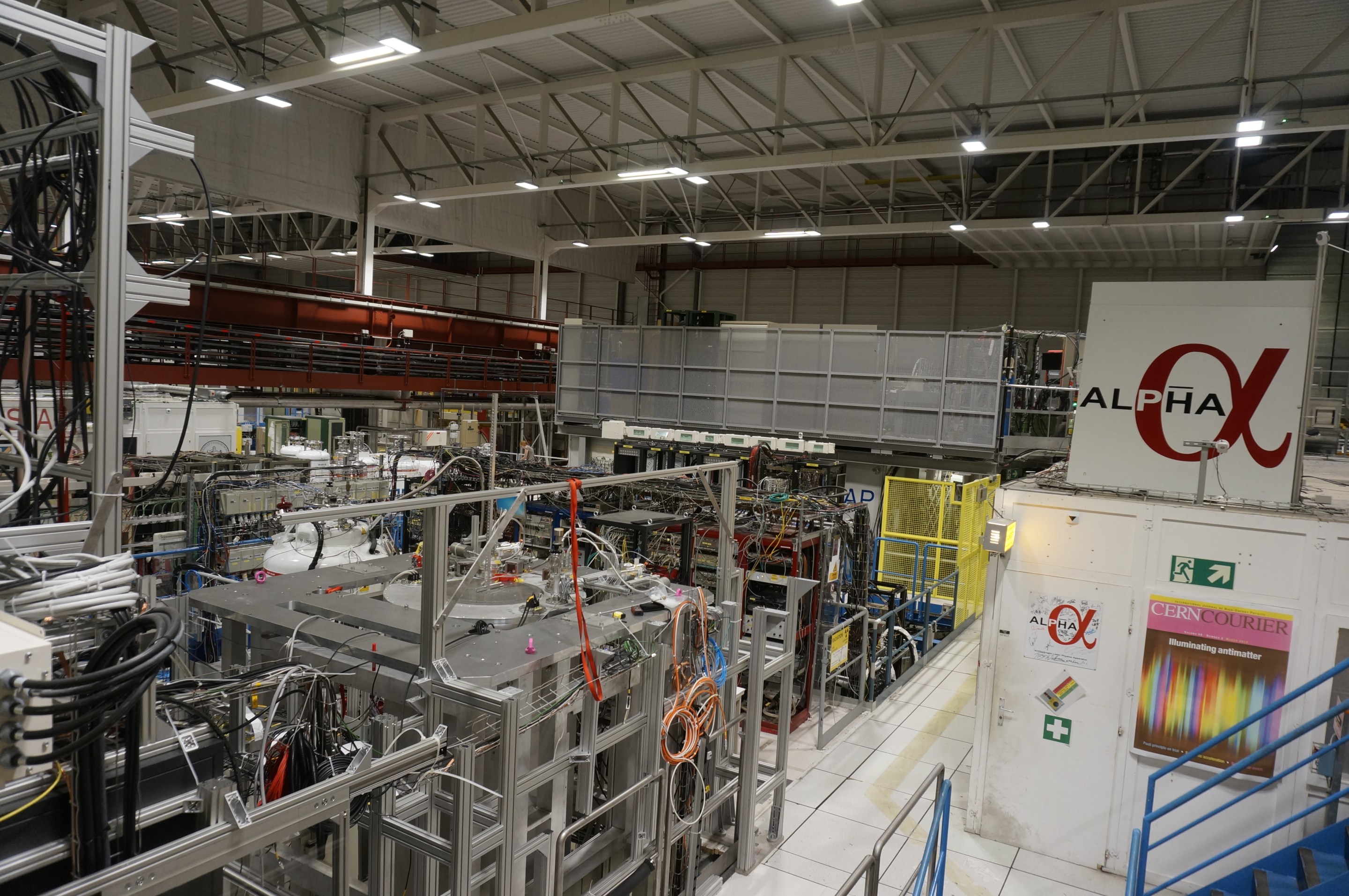There is big news this week in the field of performing insane-sounding feats with completely made-up-sounding invisible little things, via science.
Physicists at the European Organization for Nuclear Research (CERN) announced Wednesday that they have used something called "pulsed, narrow-linewidth, Lyman-α laser radiation" to cool antihydrogen atoms to near absolute zero, and then to, ah, to "manipulate" them. Why is this cool, you ask? To which I would ask, in return: Is it cool at all? Possibly not. But anyway a laser that can freeze atoms to sub–deep space temperatures can absolutely, 100 percent do fantastically destructive things to a human head. I simply will not be told otherwise.
First, the experiment itself. The project is called the Antihydrogen Laser Physics Apparatus (ALPHA), and it does something called "Doppler cooling" to slow antihydrogen particles from their normal fantastic speeds all the way down to a Space Mountain-like 31 miles per hour. Once you've got a bunch of slowed-down antihydrogen atoms, you can group them together and, like, move them around, possibly with a magic wand, I'm not certain. Physicists are extremely into this stuff because ALPHA marks the first time in history that mankind has directly manipulated antimatter.
The theory goes that antimatter particles, which are abundant throughout the universe, are essentially identical to matter particles, but with an opposite charge. So a hydrogen atom is one proton and one electron; an antihydrogen atom would be made of one antiproton and one positron. Manipulating antimatter is neat for science types because antimatter, however made-up it may sound, is both real and super-weird, and there are all sorts of open questions about its properties and its force in nature and so on. Can you jam a bunch of antimatter particles together and make, say, antiuranium? And then an antinuclear bomb? I'm just spitballing here but that sounds extremely tight. Physicists have not had a lot of chances to work with antimatter, for the simple reason that isolating it from matter is usually not possible, and when antimatter comes into contact with matter it tends to explode. And so isolating some antimatter in a lab and getting a chance to smush it around and observe it is a brand new glimpse at the workings of the universe. Neat!
Back to the cold laser. I was unable to grasp how lasers, which in most circumstances are used to blast Imperial Storm Troopers to space hell, can in fact be used to make something not just cold, but insanely, unfathomably cold, colder than damn Pluto, the ice non-planet. It turns out this science is not new—a trio of scientists won a Nobel Prize for laser cooling in 1997—but physicists are coming up with new uses for it all the time. I asked an elite physics-knower, Dennis Perepelitsa of the experimental nuclear physics group at the University of Colorado, to explain this laser cooling business to me, and here's how he describes it:
The idea is that you shoot atoms with a laser only when they’re moving towards you, which slows them down but leaves them in a higher energy state as they absorb the laser light. The excited atoms then shed that extra energy by firing off that bit of light, but they emit it in a random direction, and so the net effect is that they remain slower than when they started. Since the “temperature” of something is really just a statement about the distribution of velocities, this cools the atoms. So shooting lasers at things - if you’re careful to shoot them in a highly selective manner - can make things colder!
If you can shoot this cooling laser "in a highly selective manner" at a bunch of invisible antimatter whizzing by at subatomic speeds and slow them to what ALPHA's researchers describe as "submicroelectronvolt transverse kinetic energies," it should be no problem whatsoever to turn, say, a man's head into an ice block, and then to shatter the ice block with a single tap of a ball-peen hammer. My head is both extremely visible and not very fast at all, and if all my atoms were moving toward the laser together—say, if I were sprinting at it, or standing perfectly still on a fast-moving conveyer belt—it should be as simple as aiming the laser at my ecstatic face and flicking the switch. Presto freeze-o. Sweet oblivion.
The head-annihilating possibilities seem extremely promising, but until physicists are ready to climb that particular mountain, experiments will be limited to the realm of antimatter. Scientists remain enthusiastic that ALPHA's success will "drastically improve spectroscopic and gravitational studies of antihydrogen in ongoing experiments," and will potentially lead to future experiments with something tantalizingly referred to as "anti-atomic fountains," which will almost certainly be some sort of doomsday weapon.






